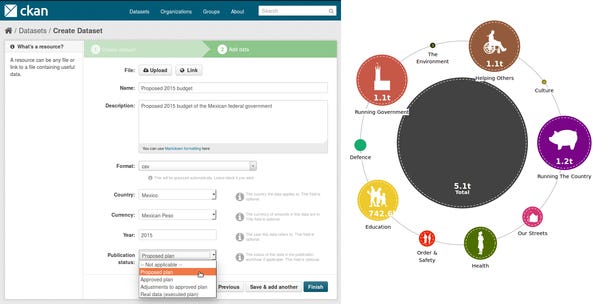6 Super Useful Open Data Portals & Platforms
Issue #20
I’m Vignesh Kaushik. I curate and write articles on Thank God It’s Computational to help architects, designers, and urban planners leverage cutting-edge technologies on AEC projects.
TGIC is a community-driven platform providing concise technology education to students and professionals in the AEC industry to learn at their own pace. If you’re not a member, consider joining the community and supporting our work.
At a global level, most government datasets go unused, and over 90% of government data still isn’t even open. Out of the hundreds of thousands of datasets released by tens of thousands of government agencies every year, only a handful make their way into a consumer experience in any meaningful way. Like any public resource, open data needs to be developed, managed, and provided in a way that meets the needs of the people and organizations that use it. Several global initiatives such as the Open Data Index and Open Data Barometer have gone a long way in assessing the supply and quality of open data around the world.
In this issue, let’s take a look at a few open data portals and platforms that allow us to access open data seamlessly, study the impact and get valuable insights.
Open Data Portals
Plenario • Hub For Open Datasets From Around The World
At it’s core, Plenar.io is a platform that understands the ‘where and when’ of every dataset thats been loaded in to it. Structuring the data in this way allows us to query a place and time to find what data is available, and then explore, filter or download it. The goal is to reduce the work in finding, cleaning and extracting the plethora of siloed open datasets that are currently available. To this end, Plenar.io features a well documented API for application developers and a robust data explorer for browsing.

Open Data Impact Map • International Use Cases of Open Data
The Open Data Impact Map is a public database of organizations that use open government data from around the world. Currently 96 countries, and 1765 organizations have been captured in the Impact Map .The Open Data Impact Map is also the first public database of open data use cases around the world. It is designed to demonstrate the value of open government data in a range of applications and provide a basis for further analysis of the impact of open data globally. The Map makes it possible to compare international use cases based on the types of data they use, the industry they operate in, and other factors.

Video: Impact Map Demo
Open Data Platforms
Dat Data • Package Manager For Datasets
Dat is the distributed data sharing tool. We can share files with version control, back up data to servers, browse remote files on demand, and automate long-term data preservation, all secure, distributed and fast. Dat syncs and streams data directly between devices, putting you in control of where your data goes.

CKAN • The Open Source Data Portal Software
CKAN is a powerful data management system that makes data accessible – by providing tools to streamline publishing, sharing, finding and using data. CKAN is aimed at data publishers (national and regional governments, companies and organizations) wanting to make their data open and available. CKAN provides a streamlined way to make your data discoverable and presentable. Each dataset is given its own page for the listing of data resources and a rich collection of metadata, making it a valuable and easily searchable data catalogue.

Video: Creating a Dashboard through the CKAN API
Open Grid • Democratizing Open Data
OpenGrid, an interactive map platform, is raising situational awareness for Chicagoans. Residents can easily search curated datasets, including those provided by the City of Chicago, and visualize the results on an interactive map. With OpenGrid, Chicago is making its data more accessible to everyone—from residents, to businesses, to community groups. The city also hopes to strengthen a collaborative relationship between these groups and local government in the process, and create a new model for open data that can be replicated in other cities and organizations. As an open source project, OpenGrid code and documentation is available to other cities, allowing them to replicate with their own data.

Video: Explore a data-driven Chicago
Cesium • An Open-Source JavaScript Library For 3D Globes and Maps
Cesium 3D Tiles are an open specification for streaming massive heterogeneous 3D geospatial datasets. To expand on Cesium’s terrain and imagery streaming, 3D Tiles will be used to stream 3D content, including buildings, trees, point clouds, and vector data. 3D Tiles support interactive selection and styling. Even with WebGL optimizations such as batching, 3D Tiles allow for individual model interaction such as highlighting on mouseover, or removing a 3D building. Tiles can contain metadata for each model to allow additional interaction, such as querying third-party web services using a building ID.

Live Map: Manhattan in 3D

